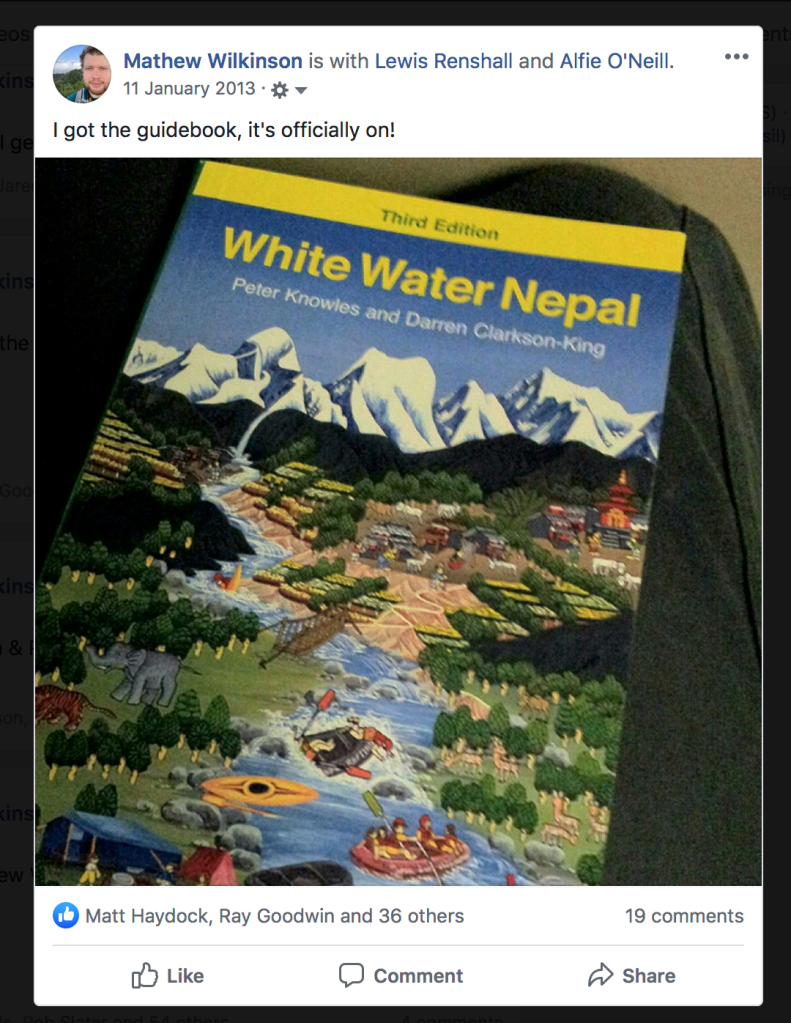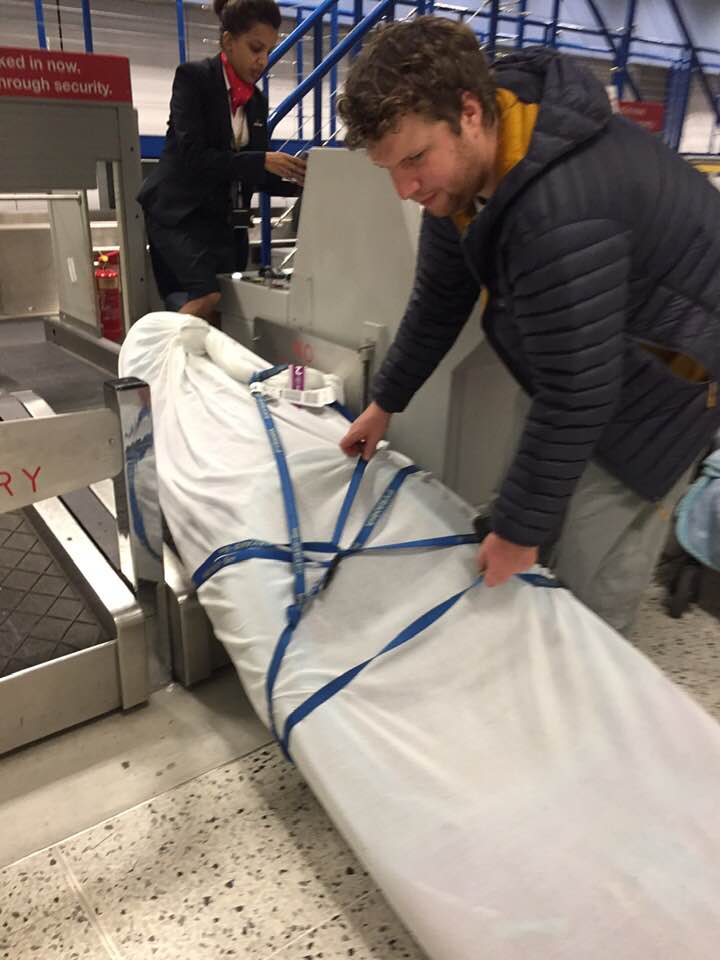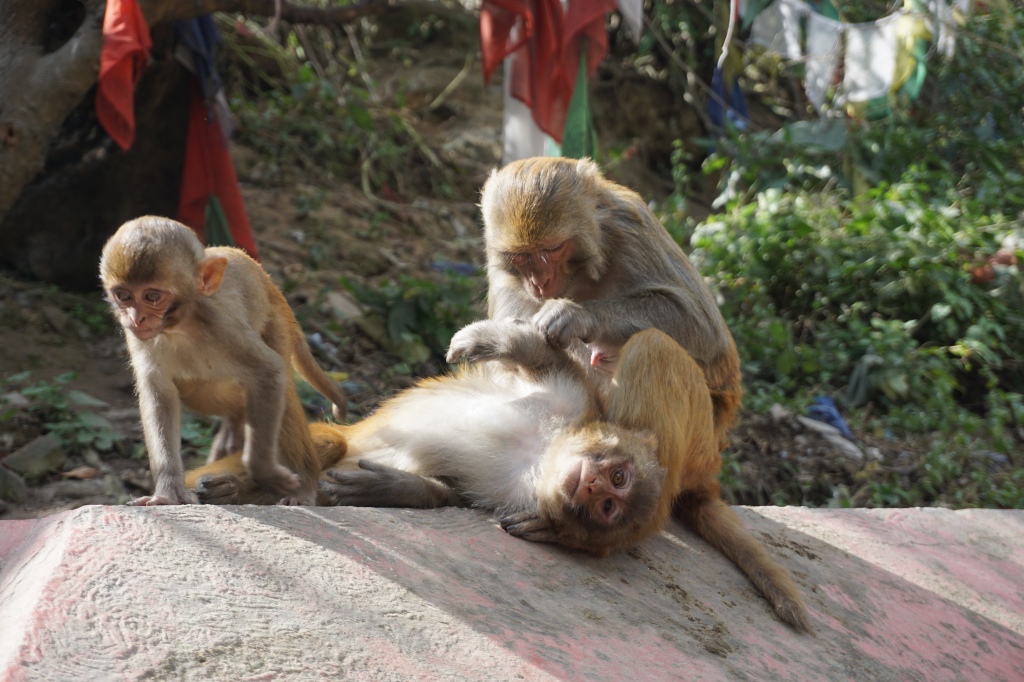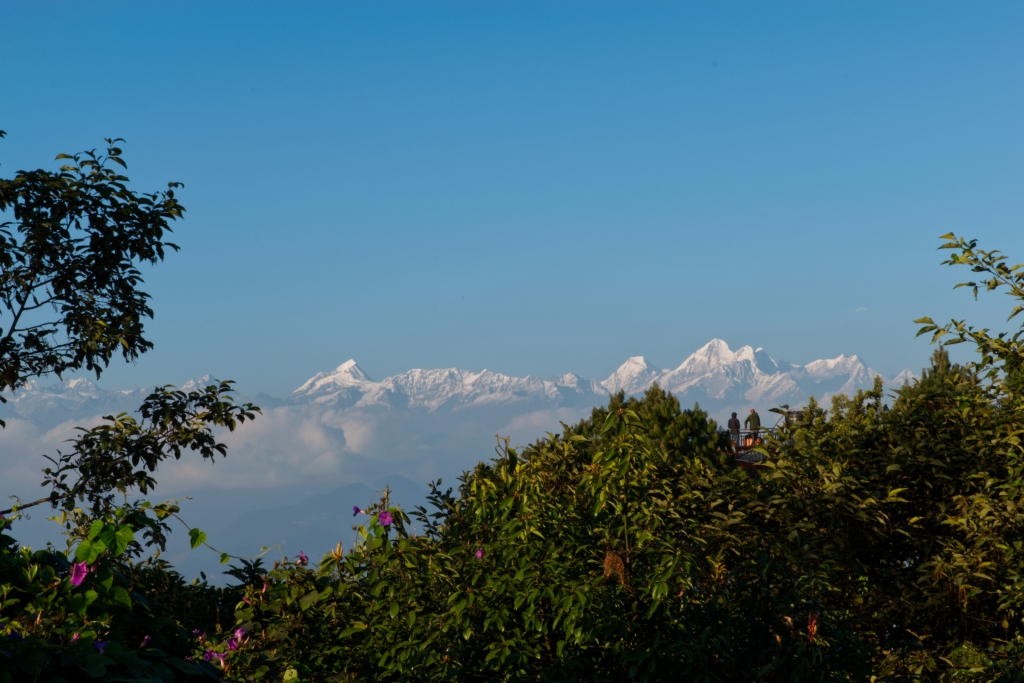Having noticed a trend of castle-adjacent waterways forming in our canoeing adventures, Simon and I decided to commit to it, and met at Biskits to form a plan.

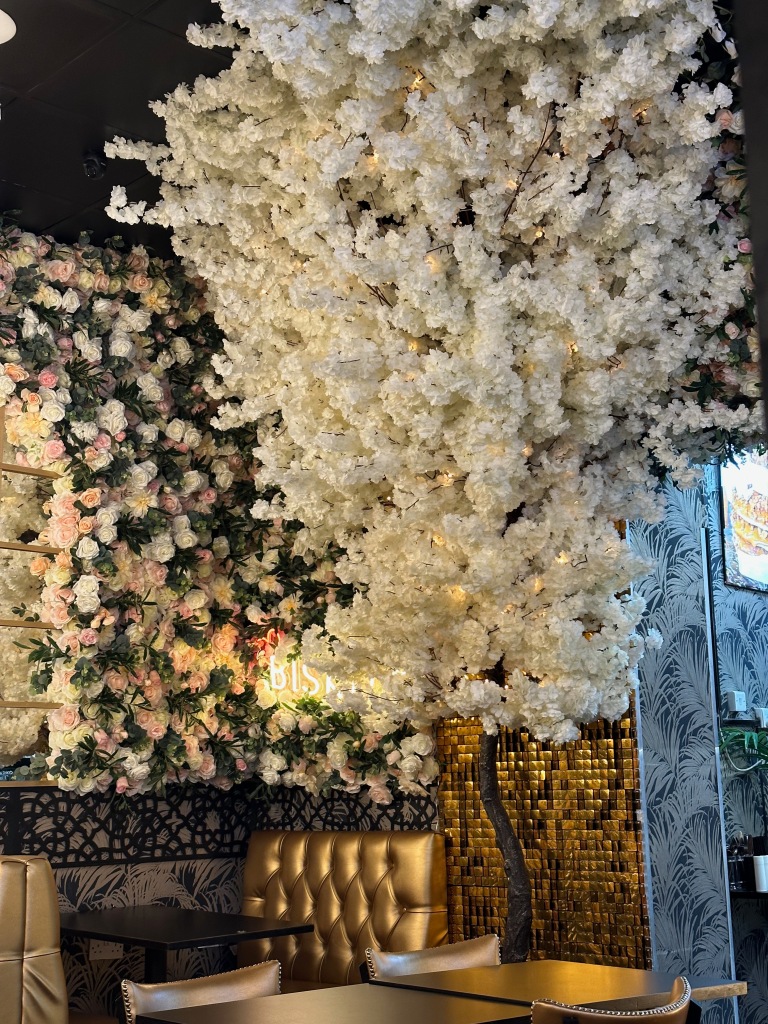
When the Easter weekend arrived, we headed north, stopping at Sainsbury’s in Penrith to gather supplies. Simon had spent a significant portion of the drive so far listing the number of layers he had brought with him, scaring me into buying a hoody from the Tu Clothing aisle… just in case. A quick (and delicious) coffee from Chopping Block, and we were on the way.
Atop my car’s roof rack, we had with us a pair of Ions (the Pyranha kayaks… the number of actual ions was, presumably, several orders of magnitude greater) and modest ambitions of breaking up the drive with an interlude at Lochmaben. Here, we’d planned to paddle a short distance on the appropriately named Castle Loch and find somewhere on its shores to set up camp for the night. When we arrived at Castle Loch, however, we found the castle to be hard to spot, and the loch itself to be rather uninteresting, and also a designated nature reserve.
With the first part of the plan abandoned, we checked the Isle of Mull ferry schedule, and quickly abandoned that part of the plan too when we realised it was completely sold out.
It had been a few hours in the car, and the coffee we’d drunk earlier had had enough time to take effect and lead to us feeling a different call of nature, so we swung by a services. Simon had sworn he’d only abandon our planned lunch of tortilla wraps with grains and hot dogs for a KFC, but as soon as we walked past the McDonalds on the way to the toilets and saw the Creme Egg McFlurry adverts, we knew we were too weak to resist. The McFlurry machine was out of service, of course, but the damage had already been done.
The part of the original plan we could go through with was to continue on to Beyond Adventure in Aberfeldy, where we would swap the Ions for a Burgundy Venture Ranger 162 with Skeg (no, that’s not a typo – this video explains all), and borrow a canoe paddle for Simon.
A quick turnaround at Beyond Adventure (including a look at their new racking to house a Pyranha Kayaks Demo Fleet), and then we continued on to Tummel Bridge where we finally packed out into the canoe and got on the water. I gave Simon a quick lesson in breaking into and out of the flow, and then we set off downstream, knowing we’d have to paddle back upstream the next day.
The River Tummel flowed out into Loch Tummel (I do love the unspoilt and uncomplicated nature of Scotland’s toponymy) via a surprisingly shallow estuary. As our paddles clipped rocks with almost every stroke, I was increasingly glad we’d borrowed a sturdy, plastic-bladed paddle for Simon, rather than him using my slender, lightweight wooden paddle, which is intended for deep water use only (it was still along for a ride in the bottom of the boat as a spare, though).
We emerged into Loch Tummel proper, and the large building on the southern shore, which appeared interesting at first, became less and less appealing the more of it that came into view – we soon realised it was a hotel, probably popular on account of the spectacular views, but it felt a shame that they ruined everyone else’s in the process.
In contrast, there were several other magnificent and stately homes on the opposite shore, and we took time to appreciate them (and catch our breath) in the diminishing light on the frustratingly frequent occasion we’d mistaken a headland for the island we intended to camp on, and sheltered behind it before emerging to battle against the wind once again.
A father and son raced around the grounds of one mansion on quad bikes, and in the grounds of another, I spotted a Pyranha Fusion in one of my favourite colourways (Lime/Blue/White).
As sunset closed in, we began to consider some alternative areas to set up camp, although none were ideal – especially the one which was in the middle of an archery course! We pressed on, though, and finally reached the island we were aiming for; Simon jumped out to pull the boat ashore as I watched the tiny bat which was darting about above us.
We’d heard the clamorous sound of geese as we approached the island, and despite there being several swimming nearby as we approached, we remained foolishly hopeful they weren’t nesting on the island – a quick exploration proved otherwise, and thanks to a traumatic experience on Derwentwater, we decided to move on. As we paddled across to a promising-looking section of the loch’s shore, we saw several others camping next to their vehicles along this same side; it was good to see people enjoying the outdoors responsibly in whatever way they’re most comfortable doing so.
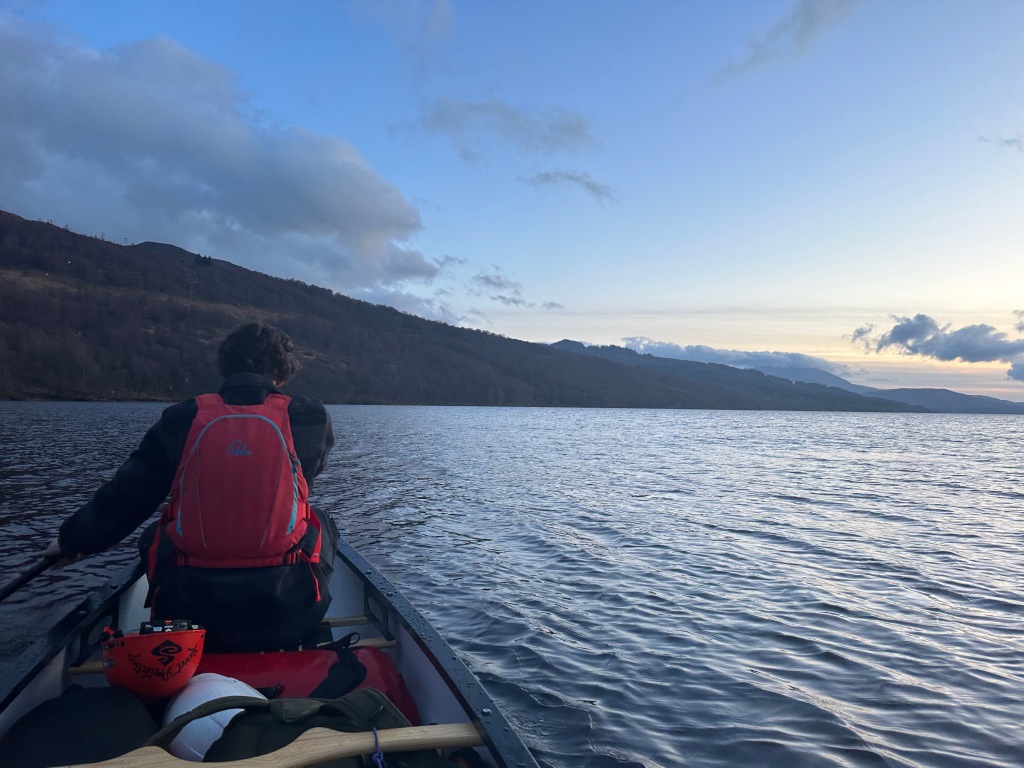

As Simon set up the tarp, I started dinner. I’d made the process a little more complicated by forgetting the gas converter for my Trangia, forcing me to boil some water in my Jetboil (during which I discovered that the logo changed colour as the contents start to boil – such a useful feature!) and then transfer this to a larger pan in which I cooked some tortellini over the standard Trangia meths burner. I mixed in an excessive amount of desiccated veg which Simon had made, and took the meal to the next level by slightly overcooking everything – the best thing about campsite food, though, is that it usually comes after a long, hard day’s exploring, and therefore tastes fantastic no matter what!
Earlier in the day, Simon had mentioned the concept of doing some exercise before getting into your sleeping bag, so you could trap the heat generated and have a cosier night’s sleep – I covered this in a most efficient way by wrapping up in multiple layers (socks, a long sleeve base layer, thermal onesie, walking trousers, a shirt, my panic-purchase hoodie, and a down jacket) and then wrestling myself into the sleeping bag and bivvy bag simultaneously while trying not to slip off my roll mat and become one (with a capital ‘M’) myself, on account of the grassy slope next to the tarp that led straight off a 2ft drop to the rocky beach and straight into the loch.
Simon wasn’t far beyond the tarp, practising his fire-lighting skills, but there was no chance I could move even so much as to free an arm and lift the edge of the tarp to observe, so I settled down for the night.
I fell quickly to sleep, only waking occasionally to throw myself over and allow one arm to regain feeling as the other slowly lost it, or curse gravity and a poorly chosen sleeping spot and shimmy back up the roll mat. Each time I slid downhill, my feet drifted out from under the tarp, but thankfully the bivvy bag kept them and my sleeping bag dry through the midnight showers, although these didn’t help the background urge to go take a private, up-close look at a tree.
The morning arrived as if it were sent via Royal Mail (i.e. it was in good condition and the right place, unlike a Hermes/Evri delivery, but not necessarily as prompt as a DPD delivery). The first, and most important task was to make coffee; a chance to use possibly my favourite combination of outdoor adventure gadgets, the Jetboil and an AeroPress GO. I’d usually forgo sugar and milk in my coffee while on an adventure, but Simon had thoughtfully grabbed some sugar sachets for me from the service station we visited the day before, and I’d picked up some Coffee-Mate during our Sainsbury’s supply run. The coffee was paired with a peanut butter Nature Valley bar, and that was breakfast.
We paddled back up the loch along the opposite shore, and the opposite way round (I don’t mean backwards, just that Simon was in control in the stern of the boat), which gave me an opportunity to take in the views as all I had to do was paddle forward. I’d poured my coffee into my new YETI Rambler tumbler which I’d purchased at the National Outdoor Expo, and I’d occasionally take a break from paddling to burn my mouth with the still-alarmingly-hot contents.
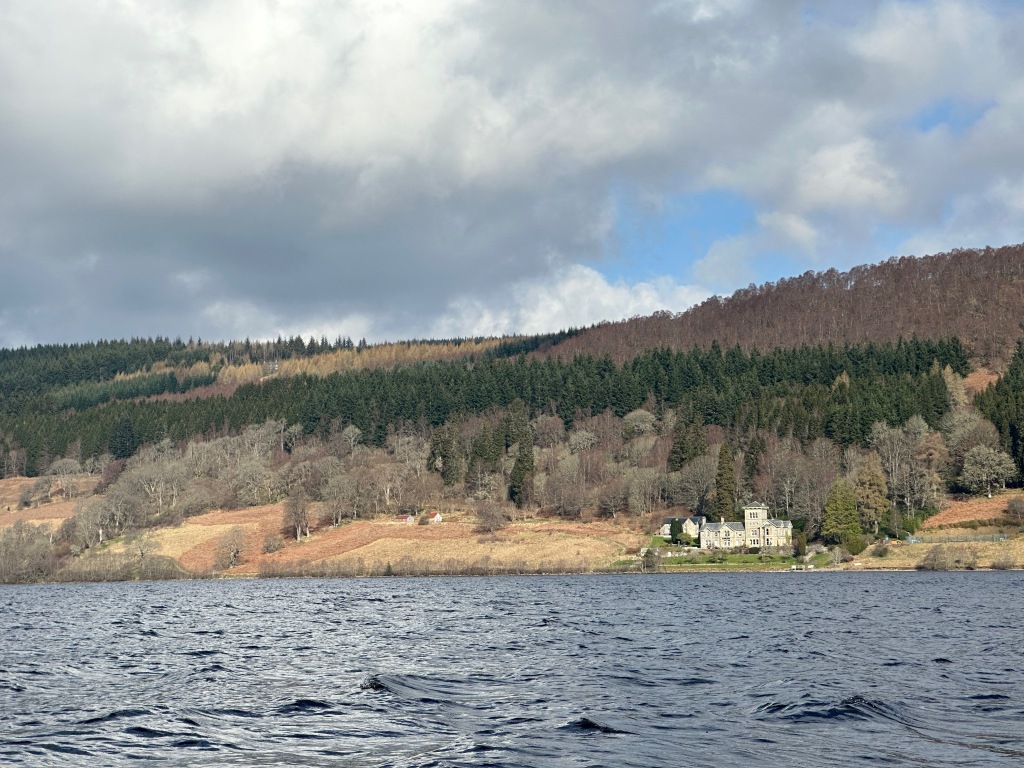
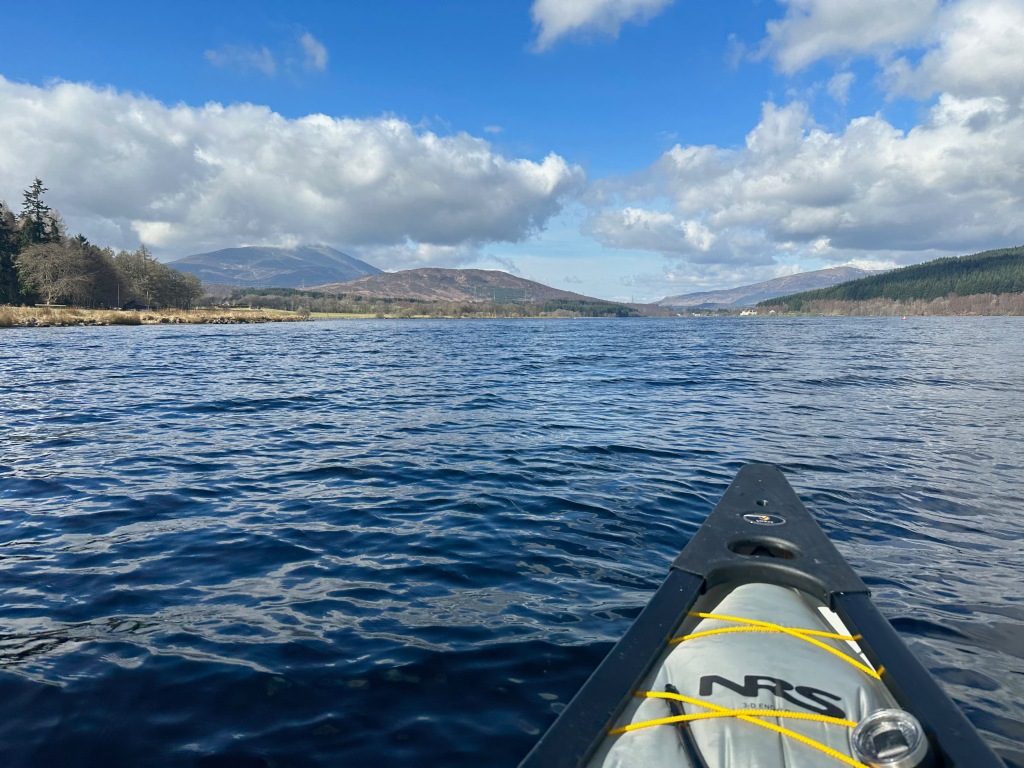

As we approached the River Tummel estuary, we pulled into the shore for a comfort break (and I took the opportunity to order some Lord of the Rings miniatures which had just gone on sale that morning) before swapping back to our usual positions in the boat, ready to take on the difficult task of paddling back upstream.
We tacked from eddy to eddy, and whenever possible used the longer eddies to creep up the riverbank, but there were still numerous points at which we had to get out, get our feet wet, and walk the canoe back upstream. I even tried lining at one point, but found that my grasp of this particular skill was woeful – time to book a course, I think!
When we finally arrived back at Tummel Bridge Power Station, a chap who’d told us he hoped we were good paddlers as we put onto the water the day before, spotted us again and said he was relieved to see us back alive. I’m not sure what to make of that! Once we’d loaded the canoe onto the car, I drove up alongside the River Tummel, pointing out the best bits of whitewater to Simon, and eventually winding up at Riverbank Cafe.
Rested and refuelled, we headed across to Loch Tay on account of Finlarig Castle (Loch Tummel supposedly had a castle on the island we’d initially planned to camp on, but we’d forgotten about it until we returned to the car, and obviously neither of us had spotted it when we were exploring the island… but perhaps we were distracted by the numerous, panicked geese).
Finlarig Castle turned out to be a short drive from the loch, but we decided to check it out anyway. Whilst getting changed in the castle’s car park, we got talking to a friendly local, and he told us about a lesser-known route up and over the hills to Loch Lyon via a single track road littered with cavernous potholes – it sounded like just the type of adventure we were looking for, so we decided to go for it… but first, to the castle!
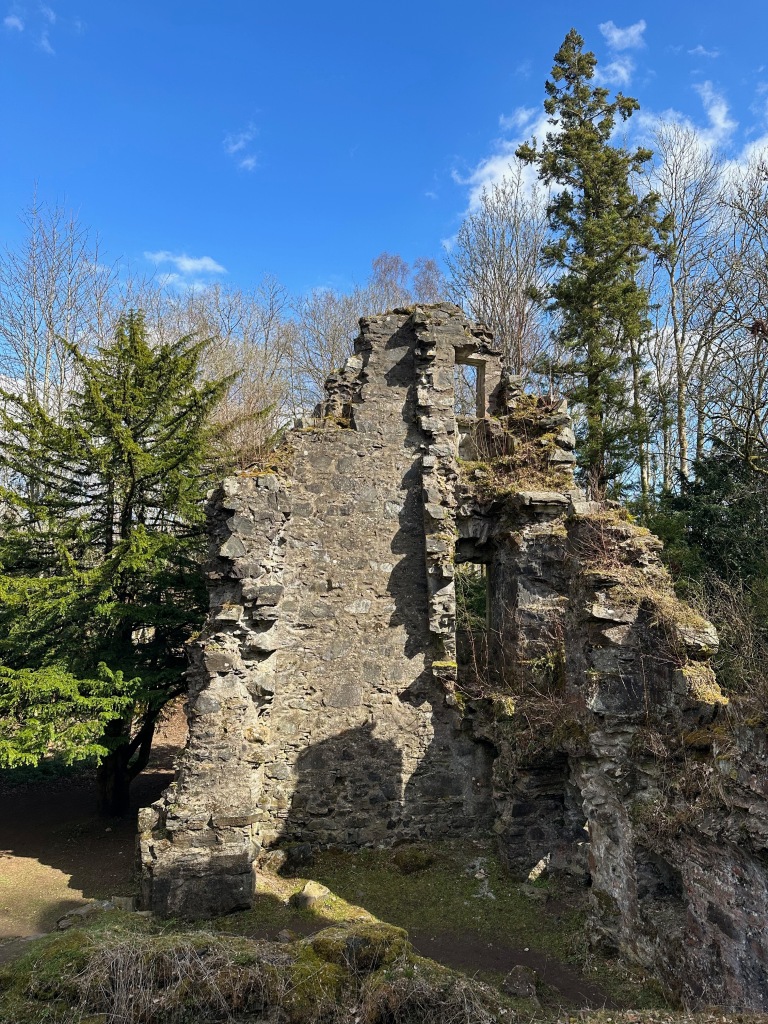
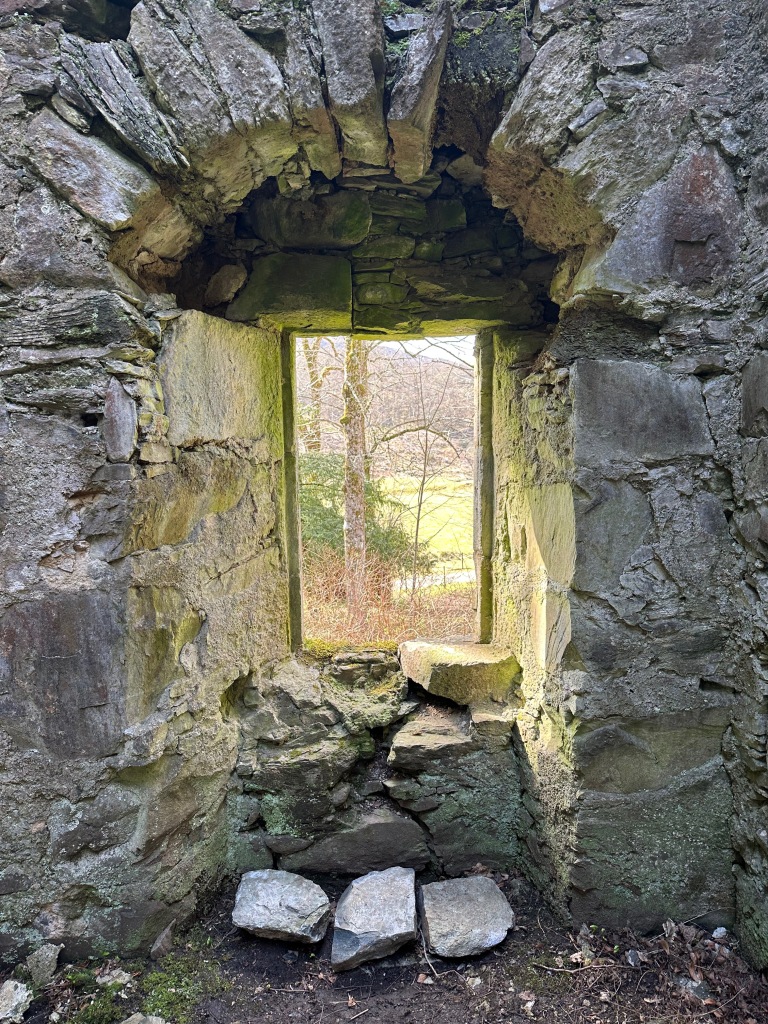



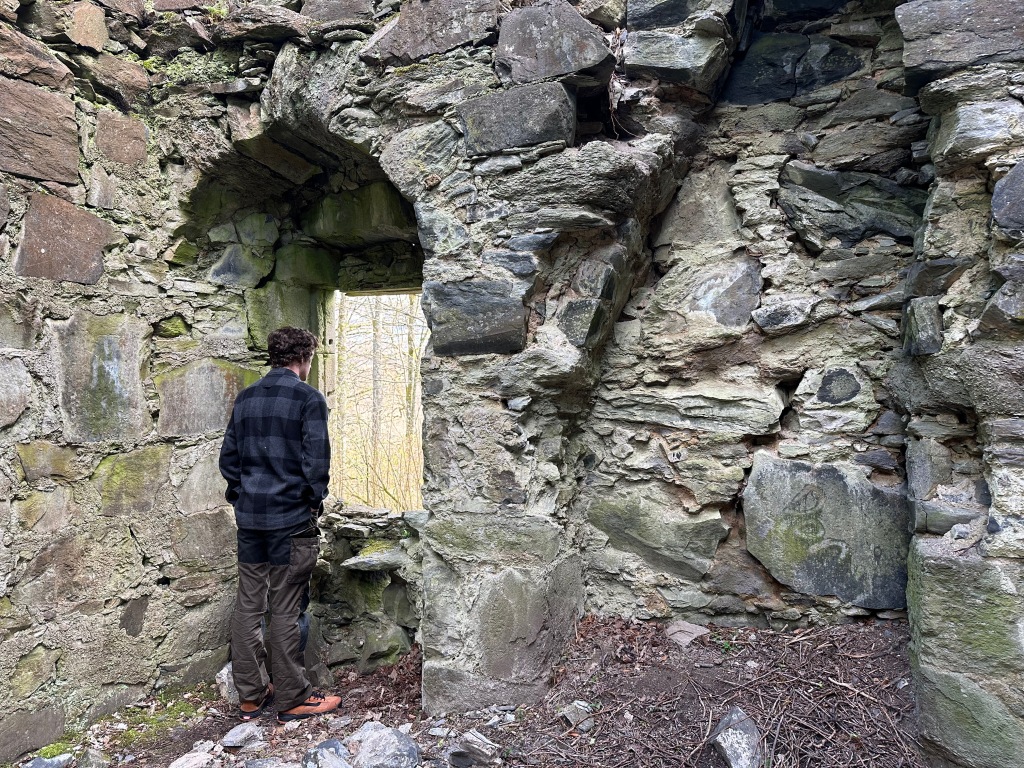




Having had our fill of castle exploration, we set to driving down what appeared to be a dead-end road alongside the River Lochay. As instructed by the chap we met at the castle, we kept going long past the point at which it felt like there was definitely no through-road, and eventually arrived at a large gate with a sign warning us that if we didn’t close it behind us, we’d awaken a Balrog of Morgoth (or something along those lines).
The drive after this point was an exercise in zig-zagging wildly up a single track road, balancing each wheel on the precipice of potholes that looked as though they’d swallow my car whole, and as I’d only just had my suspension springs replaced, I was keen to avoid that possibility.
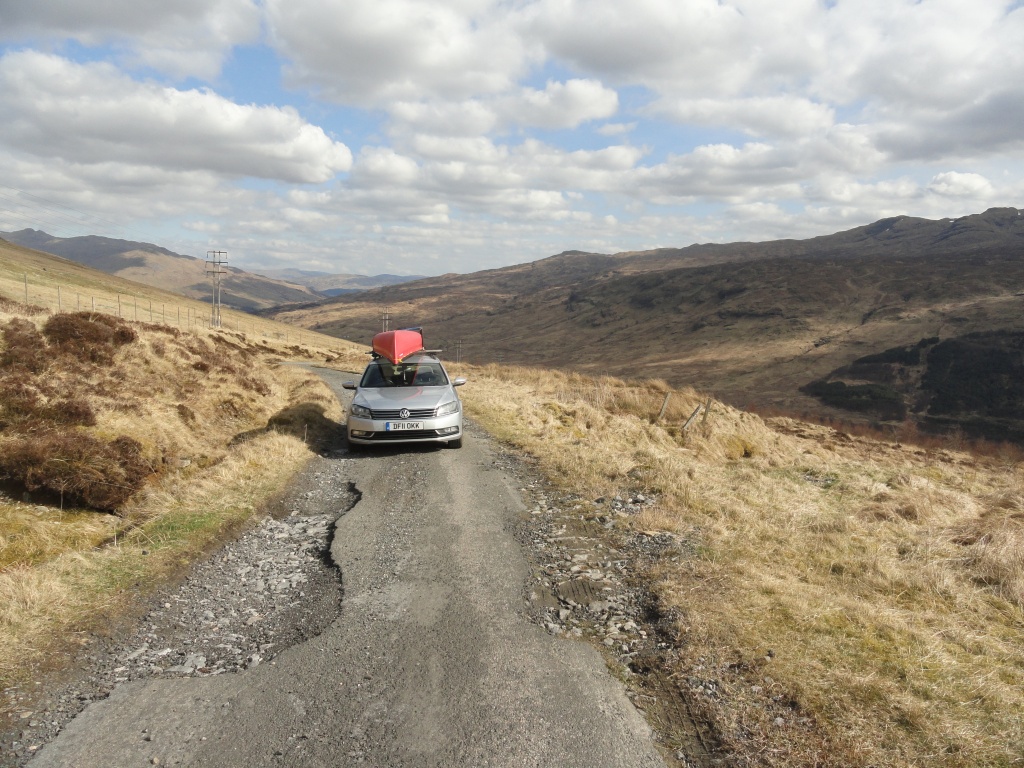

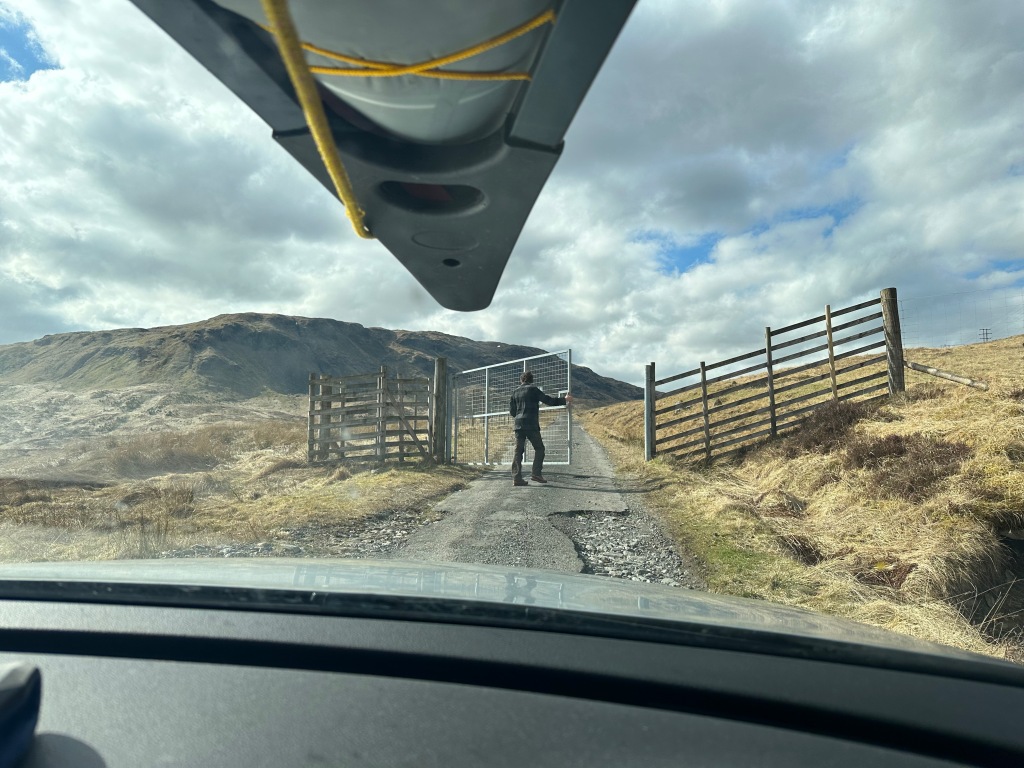
Our new friend had described Loch Lyon as ‘the most scenic loch in Scotland’; when we arrived, we were sure we must be in the wrong place. The landscape was shapely, but barren, and there was an imposing dam at one end of the loch. Being man-made, the banks of the loch were also rough slopes of shale which scarred the hillsides, rather than the naturally beautiful shores we enjoyed on Loch Tummel. After a quick wander, we decided Loch Lyon wasn’t for us, and prepared to move on.
A quick look at the map (luckily pre-loaded on my phone, as the signal was non-existent) showed we could continue along the same road, which had improved drastically since our pothole dodging adventure, towards Dunalastair Water.
Some background is required before the next section of the story; a few months earlier, during one of our regular catch-ups over coffee (this time at Coffee Block in Stockport), Simon surprised me by pulling out a ring… unfortunately, no-one else in the café noticed, so I couldn’t act all flustered and scream ‘YES!’ before Simon had a chance to tell me it was actually meant for his partner, Catherine.
Jumping back to the more recent past, en route to Dunalastair Water the conversation turns to stag dos, in the course of which Simon surprises me again by asking if I would like to be his best man; no sooner had I said yes (this time in all seriousness), than I realised there was a herd of highland cattle crossing the road in front of us. I slowed right down as we passed within feet of possibly the cutest calves I’ve ever seen.
When we arrived at Dunalastair Water, we checked out a few locations to put-on and just so happened to choose a lay-by alongside another section of the River Tummel. We found an appealing looking section of forest a short way downstream, but sadly after finding a beach where we could jump out and explore, we realised it was surrounded by a high fence, so we jumped back in the canoe and continued.
As the river opened up, we found ourselves choosing our route through a cluster of islands. We may have almost gone accidentally back upstream on a fork at one point, been forced to drag the canoe over one particularly shallow section, and had to dodge one or two strainers formed by fallen trees, but we made it to Dunalastair Water!
The evening was closing in, so we found a larger island (accompanied by another bat, but thankfully no geese) and searched it for a suitable area to set up camp, Many of the flatter, drier areas were dissected by animal tracks (meaning the chance of ticks was high), but we continued searching, gathering firewood as we went (which made it increasingly difficult to squeeze through the denser areas of forest).
We came dangerously close to getting lost, shortly before deciding to set up in a spot right next to the first place we looked, proving conclusively that not everything you look for is exclusively in the last place you look.
Our chosen spot was just a short walk from where we’d landed the canoe, and here is where we decided to cook dinner. On the menu this evening was pasta with hot dogs (is it still a menu if there’s only one option? I suppose the pasta or hot dogs could have been served separately…). Simon then built another fire, and as I hadn’t yet entered my cocoon, I managed to enjoy it too.
It’s amazing how drastically setting up your roll mat somewhere flat and going to take a private look at a tree before you cocoon yourself in 8 layers of fabric can improve your quality of sleep.
The next morning we set off to paddle back up the Tummel for the final time; this involved passing a couple we’d seen setting up their tent the evening before as we headed downstream, and I feel the confused looks they gave us as we now headed back upstream were probably justified. They likely thought we were some sort of expert canoeists with superhero strength; little did they know, much of the rest of the journey back upstream looked like this…
The last rapid, whose water was a little too deep and banks a little too steep, did call for us to summon what remaining energy we had to paddle hard and ferry glide back upstream, but thankfully the car wasn’t much further beyond this – we slowly re-packed the car and got changed before loading the canoe on the roof to return to Beyond Adventure.
The last part of the adventure was to head home, and having managed to avoid a private look into the distance with my back to a tree, we visited the first Starbucks on the way – unfortunately, I was too eager and only realised past the point of no return that the cubicle I’d rushed into had no toilet paper. I was left with no choice than to pull my trousers up just enough to preserve my modesty, and shuffle along the corridor (which was in full view of the whole café) to the next one.
Of course, it would be rude to pass Tebay services without calling in, and I couldn’t help but pick up some particularly fancy tortellini so I could right the wrongs of my campsite cookery earlier in the trip.










